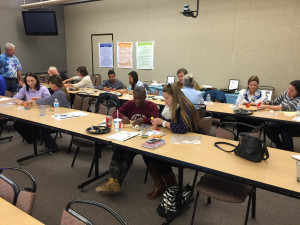 Beth Wells, the Executive Director of the Nevada STEM Coalition (I’m on their board of directors) asked us to provide a training to STEM professionals that have volunteered to be part of our new STEM Ambassadors program. From the STEM Ambassadors web site:
Beth Wells, the Executive Director of the Nevada STEM Coalition (I’m on their board of directors) asked us to provide a training to STEM professionals that have volunteered to be part of our new STEM Ambassadors program. From the STEM Ambassadors web site:
“The STEM Ambassador Program is a statewide initiative by the Nevada STEM Coalition and partners, designed to connect students with volunteers who use science, technology, engineering or math (STEM) skills in their majors and careers.
Volunteers register on the STEM Coalition website with their availability, interests and skills. Teachers contact the Coalition when they need speakers, project participants, or contest judges. Training is offered for volunteers who would like more knowledge about what to share and what kinds of activities enhance the new Nevada Academic Content Standards in Science.” (Next Generation Science Standards)
We fed them dinner and then got them involved in a hands on engineering activity building a “cart” from a bag of materials … but no directions. The idea for the activity (which we tweaked a bit) came from FOSS (Full Option Science) out of the Lawrence Hall of Science in Berkeley, California. FOSS is really the only hands-on program out right now that is fully aligned to the Next Generation Science Standards and provides all the materials required to facilitate the lessons in a classroom.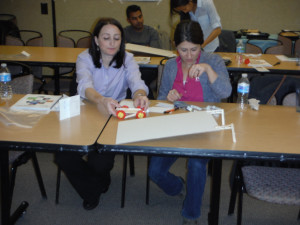
After 20 minutes or so each pair had successfully constructed a cart that had rolling wheels. Next we had participants rotate around the room and inspect each others’ designs. They were require to “push” each cart as they inspected it to learn how well each one rolled. We encouraged taking photos of designs they liked and some did.
Next we asked them if all of the designs were the same and they noted that no two were alike. We gave them 8 minutes to incorporate anything they learned into their cart (re-engineer). All changed at least a little, but over half made changes based on designs that rolled better. Half made aesthetic changes to their carts when they noted they still had time. That was a discussion point and the connection to STEAM (adding art to STEM) was noted.
Ramps were set up and the STEM Ambassadors ran trials and collected data on how far their cart would roll from the top of their ramp.
Then we debriefed the data and experience in general.
The goal of the night was to prepare the participants, some from non-profit organizations, some business owners, but all with connections to STEM, to volunteer in schools. We informed them that there were multiple ways they could be involved in promoting and supporting STEM in our schools (see quote above) and we wanted them to be aware of the kinds of activities we were training teachers to facilitate in their classrooms. That way they could better support those kinds of learning experiences and even facilitate and provide the materials for their own hands-on learning piece when they visited schools if it fit their situation – for example if they were a transportation company the activity we did tonight, or one similar would be a great fit.
It was a great night that ended with a round of networking (sharing contact info).
Learning is messy!

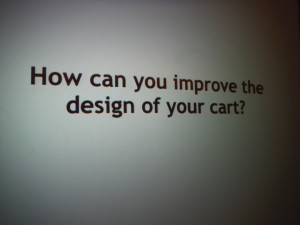
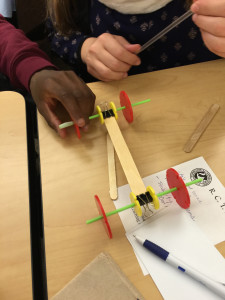
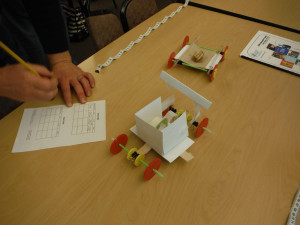
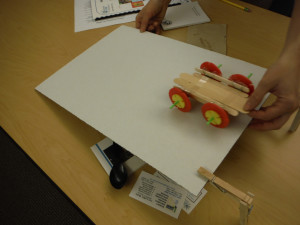
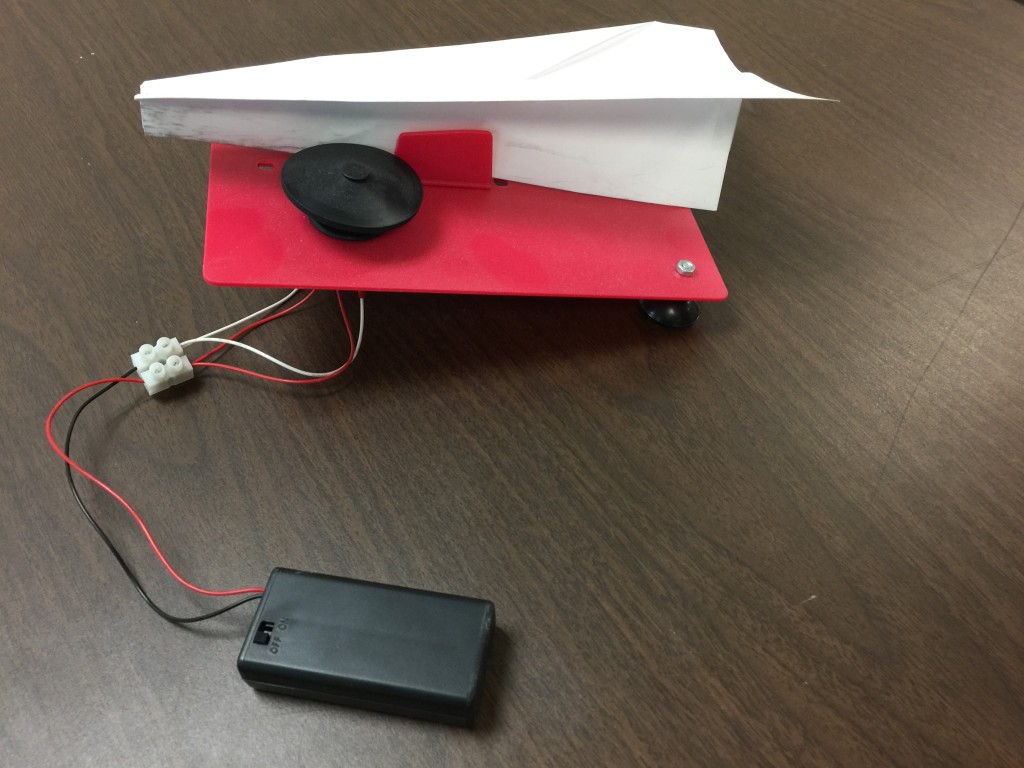
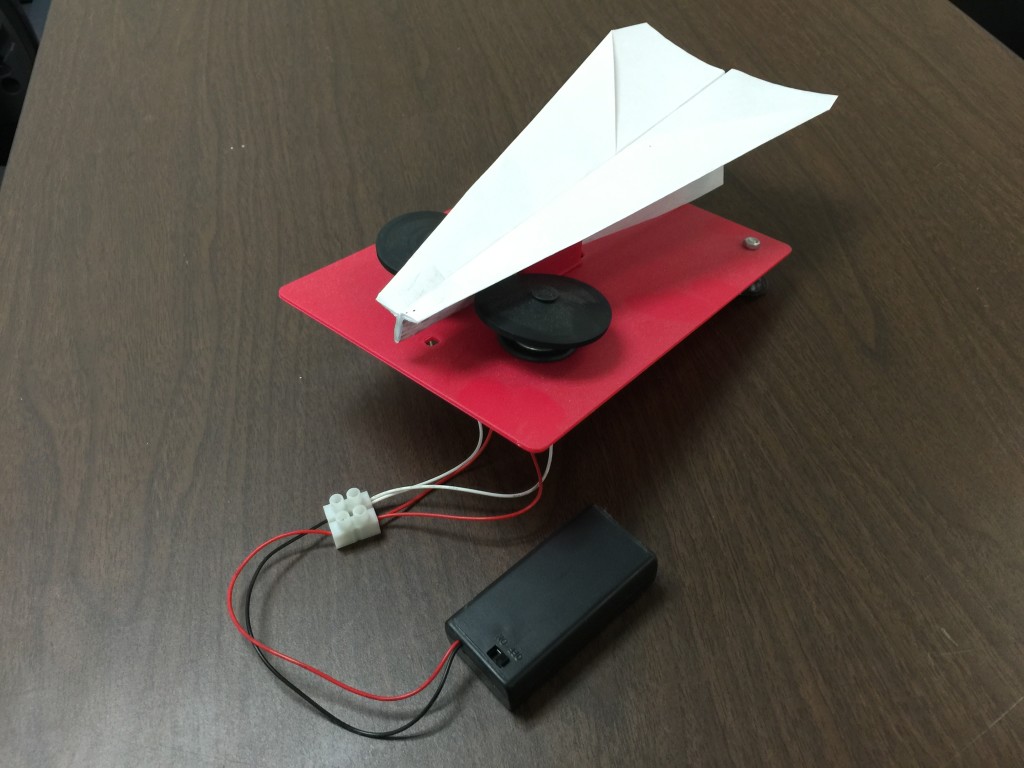
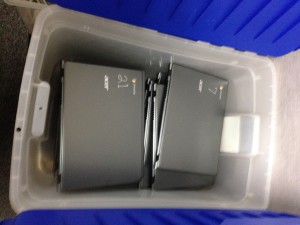
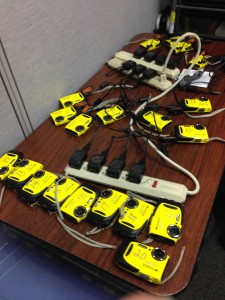


 Brian Crosby ?
Brian Crosby ? Damian Bariexca ?
Damian Bariexca ? Kristin Hokanson ?
Kristin Hokanson ? Michelle Baldwin ?
Michelle Baldwin ?